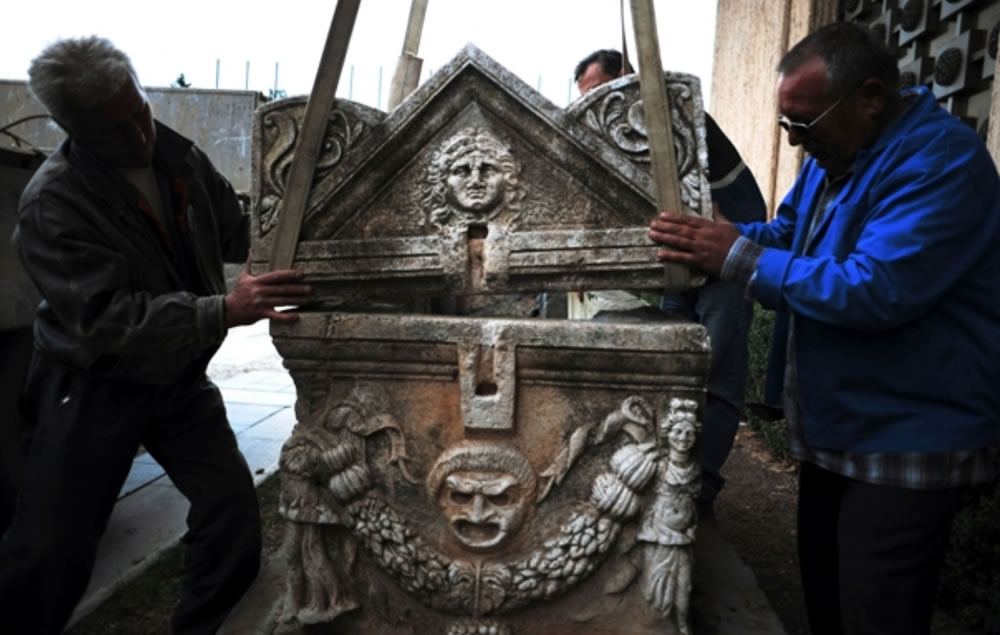The ancient Roman site of Colonia Ulpia Traiana Ratiaria in northwestern Bulgaria has been thoroughly looted for the past 20 years. Huge holes pit its surface. Unemployed and with few other opportunities to make a living since the fall of Communism, people from nearby towns use the ancient site as their personal piggy bank, supported by an apathetic populace, a fatalistic (at best) police force and active organized crime rackets who bring in heavy machinery to dig up artifacts for sale on the black market. Experts estimate the profits derived from the underground trade in antiquities as equal to those derived from the illegal drug trade, and the antiquities business is far less dangerous to the criminals.
 Sadly, there is virtually no police protection of Ratiaria and many other ancient Bulgarian sites; however, police have ramped up efforts to intercept looted artifacts before they disappear into private collections. This past February, an anti-organized crime raid in the town of Ruptsi found a mini-museum of Roman antiquities in the back yard of a local businessman, hidden behind a concrete privacy fence. He was widely known as someone who would buy from looters.
Sadly, there is virtually no police protection of Ratiaria and many other ancient Bulgarian sites; however, police have ramped up efforts to intercept looted artifacts before they disappear into private collections. This past February, an anti-organized crime raid in the town of Ruptsi found a mini-museum of Roman antiquities in the back yard of a local businessman, hidden behind a concrete privacy fence. He was widely known as someone who would buy from looters.
 Among the finds were an almost complete, richly decorated Roman sarcophagus, columns, a carved altar stone, rare Roman glassware and a relief of the she-wolf suckling Romulus and Remus. These artifacts are now on display at the National Museum of History in Sofia. This will be the first time a representation of the founding myth of Rome goes on display at a Bulgarian museum.
Among the finds were an almost complete, richly decorated Roman sarcophagus, columns, a carved altar stone, rare Roman glassware and a relief of the she-wolf suckling Romulus and Remus. These artifacts are now on display at the National Museum of History in Sofia. This will be the first time a representation of the founding myth of Rome goes on display at a Bulgarian museum.
The highlight of the collection, containing some 100 pieces including exquisite examples of Roman sculpture and ceramics, is a marble sarcophagus from the first century AD, richly carved with garlands, floral ornaments, women’s faces and figures of death.
“The sarcophagus, with an early Roman inscription, is the most beautiful of its kind found in Bulgaria,” archaeologist Elka Penkova said.
Archaeologists have dated the rest of the seized items as from around the first century A.D. as well.

Learn more about Ratiaria and its near-destruction by looters on the Bulgarian Archaeological Association’s website. You can see actual looters in action raping the land in a story that aired on an Australian newsmagazine in 2009: Plundering the Past. Watch the whole thing.
There is a sarcophagus similar to the one pictured at the Carlos Museum. The lid may have a slightly different shape though. Or more than slightly, my memory is bad and the pictures are long gone.
:yes:
For more info about places around Rome I suggest to visit this page:
http://www.welcometorome.net/en/about-rome/roman%20art
Its important that history doesn’t repeat itself….that’s his story, what about her story…..
Anything inside of that sarcophagus? :skull: